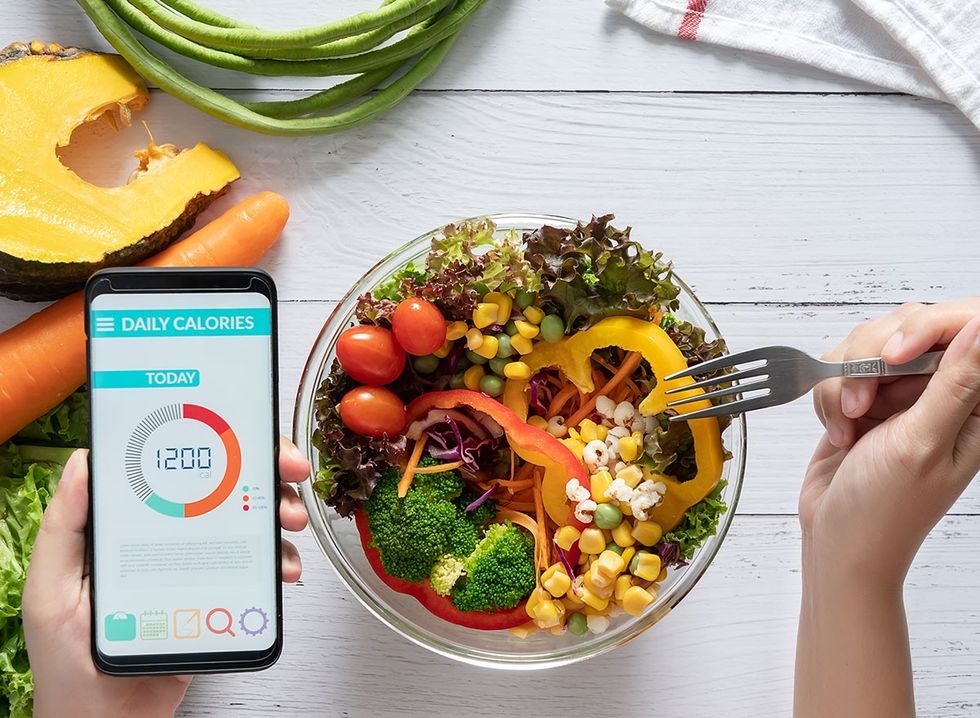Does the concept of eating lots of meat – even steak – and losing nearly 3 pounds a week seem too good to be true? According to one fan of the carnivore diet, it isn’t. Lauren Knight Hughes is a social media influencer who shares across various platforms. In one of her viral YouTube videos, she discusses her diet and how she lost 10 pounds in 4 weeks on the carnivore diet. “I am gonna talk about how I lost probably the easiest 10 pounds of my entire life. I'm gonna literally go through week by week, by week, by week to show you exactly what I did and how I was able to lose upwards of two pounds a week while being so, so stuffed the whole time,” she says.
The Carnivore Diet Involves Eating Just Meat

“So for anybody that's unfamiliar with what the carnivore diet is, it's kind of this new and up-and-coming meal plan if you will,” she says in the clip. “Basically, all you do is eat just meat, a hundred percent meat.”
People Have Cured Health Problems On It, She Says

“But I wanna walk you through exactly what I did and how to do this healthfully because I'm not a trained medical practitioner, but for me, I gave it a shot because there are so many people out there that are seeing their autoimmune diseases literally disappearing, like diabetes gone, tinnitus, gone, high blood pressure, high cholesterol, inflammation, all of that stuff is like completely going away with people when they just do this diet,” she says.
“I have to say this is probably something that I'm gonna stick with for the rest of my life because it was something that was so impactful to me, at least to some format. I'm gonna stick with it the rest of my life, and I wanna walk you guys through this because if it helped me this much, I help, it'll help you. And I'm always talking about ways that we might be able to improve our lives,” she says.
RELATED: I Lost 70 Pounds on the Flexitarian Diet and Here's How
She Also Quit Drinking

“For me, removing alcohol from my life was probably one of the best things I have ever done for myself. Like literally hands down, it's the same thing I'm realizing with this carnivore diet, which is awesome,” she says.
She Starts By Eating Meat, Eggs, and Fish

“This is day one of having just meat, which includes eggs and fish. You have only whole foods. You can't have cheese, you're having no carbs,” she adds. “Just protein and water.”
She admits that early in the diet, she started suffering headaches. “I am having this like killer headache and I don't get headaches often,” she says, recommending electrolytes. “You gotta have electrolytes for this kind of a diet to kind of get you through it.”
The First Week, She Was Weak

On day 4, she went for a six-mile trail run. “It's hard. Definitely can feel a little bit of weakness, but I kind of think that's more because I'm outta shape.” She notes that for dinner, she is going to eat beef, bacon, and eggs.
She Lost 5 Pounds in 5 Days

“So I'm excited today. I have been doing this for five days now, and I have apparently lost five pounds. Whether that's water, weight or weight, weight or, you know, inflammation, whatever that is going on. I definitely feel really good and really energized, very full all the time,” she says, adding that she is “not starving myself whatsoever at all. I'm stuffed all the time.”
RELATED: Lose Weight Faster with These 11 Effective Workouts
She Doesn’t Crave Snacks

“And then the other thing is, I don't even want any snacks, like any chips or anything. And normally, I'd be going all over that. It's not happening on this. I don't know, it's like you might be hungry in the morning, so you eat, and then you're full, you know, after just having some, having some bacon and eggs, you're full for like eight hours after that, or it's not even like you want the food, you know, it's crazy.”
At the end of the first week, she reflects. “This whole past week and kind of where it's taken me. I'm pretty blown away, I'm not gonna lie,” she says.
On Day 8, She Stopped Craving Carbs

“Without the carbs, I thought I would be pretty dead. It's not so bad, actually; maybe yesterday was the first day in a while that I felt hungrier than I had been the other seven days. I feel pretty good even today at the gym. I feel pretty ready to go without any of those carbs for now, eight days.”
“These are super essential for anybody who's gonna do this carnivore diet,” she says about electrolytes. “Our body holds onto electrolytes through water and you know, various vitamins and things that we need basically in our body to function properly. When we're eating fewer carbs or no carbs like I'm doing with this carnivore diet, you're basically holding onto a lot less of those nutrients that we would need that helps our body function properly. That's super important when doing this because otherwise you're gonna be pretty much malnourished and we ain't gonna have that. That's not the kind of thing we want. That's the opposite of what we want. And I should have been doing this from the beginning in case anybody's wondering.”
She Is Waking Up “Crisp” in the Morning

“I just woke up without an alarm, which is the seventh time I've done that since I started the all-meat diet. So I am just crisp in the morning,” she says. “And the craziest thing is that I'm honestly not craving carbs. Like that kind of feels liberating.”
She Admits She “Doesn’t Have Enough Carbs” to Run As Fast As She Wants

Lauren decides to go on an 8-mile trail run. “I have the energy to do it. So that's pretty cool. I feel good about it. Three miles in and her “legs are burning,” she says. “I don't think I have enough carbs in me to go the rate that I want to go. I have to keep stopping. I'm cramping a lot in like my shoulders kind of like back here.”
She Notes That She Has “No Inflammation, No Bloating”

She notes that pants that used to be snug fit her better. And, “no inflammation, no bloating, none of that. But the best part is, like you guys, my energy is out of this world, with very little anxiety, which is super rare for me. Just kind of like my vibe all around is just up and it's been up.”
RELATED: 12 House Cleaning Chores That Burn Calories After 50
Her Weight Loss Continues During Week 4

After entering week 4, she is still losing weight. “I have dropped another pound of body fat off of this diet. I think you can see. I'm like, I'm pretty lean. This is the most full I have ever been in my entire life.”
She Notes That She Eats As Much As She Wants

“Something that I've found to be super liberating about this particular style of eating is like I'm not at all limiting my amount of food. So specifically for this style of eating, I have always eaten how much I want to eat. Like to be to the point of being very full. And I have never felt deprived on this,” she maintains. “I have never once felt deprived in this process and still have managed to, you know, lean up and continue to build muscle and feel good and feel strong and not feel like I'm holding back on eating at all.”
Results? 10 Pounds Down and Healthier All-Around

“I lost 10 pounds plus tons of inches and my mood was better, my attitude was better. No inflammation, no bloating,” Lauren says. “I just actually went and got my blood tested today. Totally good. My blood pressure is totally good. Everything is extremely healthy and just positive,” she concludes.
Here Is What Else You Need to Know About It

While the carnivore diet may seem similar to keto, there is one major difference. According to the Cleveland Clinic, keto allows you to eat minimal carbs. However, a carnivore diet is a zero-carb eating plan. “You eat only meat, fish, eggs and some animal products; you exclude all other food groups — including vegetables, fruits, grains, legumes, nuts and seeds,” they write.
RELATED: Food Swaps I Made That Helped Me Lose 70 Pounds and Kept It Off
Cons of the Carnivore Diet

Because you are eating zero carbs, you aren’t getting much fiber. “The carnivore diet is super low in fiber, which will cause a lot of constipation,” says Dietitian Kate Patton, MEd, RD, CSSD, LD. “If you have a pre-existing chronic condition, like high blood pressure, high cholesterol, any history of stroke or other cardiovascular diseases, you should definitely not try this diet,” Patton says pointedly. “Even if you have digestive issues, this diet can make things worse with all that protein and fat, which takes a lot longer to digest.” It is also high in saturated fats, which can increase cholesterol.
💪🔥Body Booster: Start with eating whole foods like eggs, fish, and meat. Cut out cheese and all carbs.
















 Shutterstock
Shutterstock Shutterstock
Shutterstock Shutterstock
Shutterstock Shutterstock
Shutterstock Shutterstock
Shutterstock Shutterstock
Shutterstock minimalist_mark/Instagram
minimalist_mark/Instagram Shutterstock
Shutterstock
 Philip Ovadia MD
Philip Ovadia MD Philip Ovadia MD
Philip Ovadia MD Shutterstock
Shutterstock Shutterstock
Shutterstock Shutterstock
Shutterstock Shutterstock
Shutterstock Philip Ovadia MD
Philip Ovadia MD Shutterstock
Shutterstock Shutterstock
Shutterstock Shutterstock
Shutterstock Shutterstock
Shutterstock Philip Ovadia MD
Philip Ovadia MD Shutterstock
Shutterstock Shutterstock
Shutterstock Shutterstock
Shutterstock Shutterstock
Shutterstock Shutterstock
Shutterstock
 Shutterstock
Shutterstock Shutterstock
Shutterstock Shutterstock
Shutterstock Shutterstock
Shutterstock Shutterstock
Shutterstock Shutterstock
Shutterstock Shutterstock
Shutterstock Shutterstock
Shutterstock
 Shutterstock
Shutterstock Shutterstock
Shutterstock Shutterstock
Shutterstock Shutterstock
Shutterstock Shutterstock
Shutterstock Shutterstock
Shutterstock Shutterstock
Shutterstock Shutterstock
Shutterstock Shutterstock
Shutterstock Shutterstock
Shutterstock Shutterstock
Shutterstock Shutterstock
Shutterstock Tara Collingwood
Tara Collingwood

 I'm a Nutritionist and These 9 High-Protein Snacks Keep My Clients Full While Losing 50 Pounds
I'm a Nutritionist and These 9 High-Protein Snacks Keep My Clients Full While Losing 50 Pounds
 Shutterstock
Shutterstock 2. Processed FoodsShutterstock
2. Processed FoodsShutterstock Shutterstock
Shutterstock Shutterstock/Prostock-studio
Shutterstock/Prostock-studio Shutterstock
Shutterstock Pro TipsShutterstock
Pro TipsShutterstock Shutterstock
Shutterstock Shutterstock
Shutterstock Shutterstock
Shutterstock Shutterstock
Shutterstock Don’t Drink as Much AlcoholShutterstock
Don’t Drink as Much AlcoholShutterstock Most Women on GLP-1s Are Making a Few Common MistakesShutterstock
Most Women on GLP-1s Are Making a Few Common MistakesShutterstock Soda and Sugary DrinksShutterstock
Soda and Sugary DrinksShutterstock Shutterstock
Shutterstock Eat BreakfastShutterstock
Eat BreakfastShutterstock And Improve Insulin SensitivityShutterstock
And Improve Insulin SensitivityShutterstock Belly Flab Strip Tip: Sugar and Fat Calories Leave Its Mark on Your BodyShutterstock
Belly Flab Strip Tip: Sugar and Fat Calories Leave Its Mark on Your BodyShutterstock Shutterstock
Shutterstock The Drugs Mimic the GLP-1 Hormone Naturally Produced by the BodyShutterstock
The Drugs Mimic the GLP-1 Hormone Naturally Produced by the BodyShutterstock